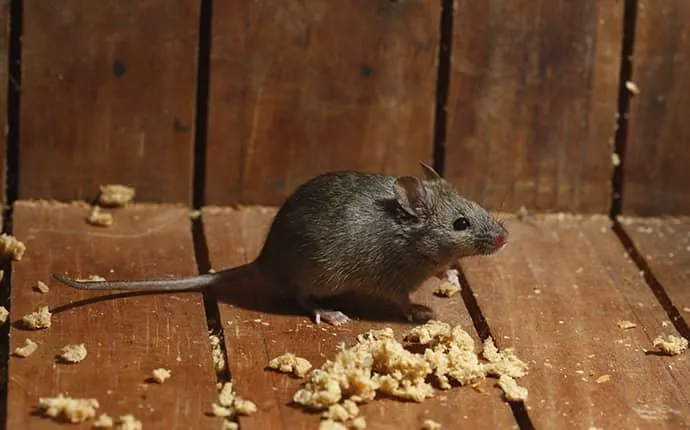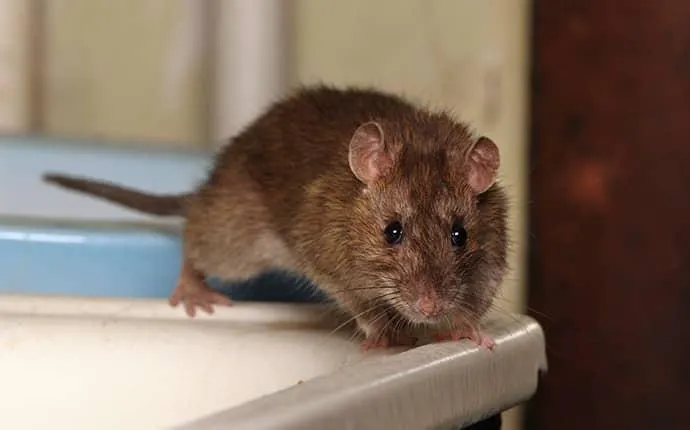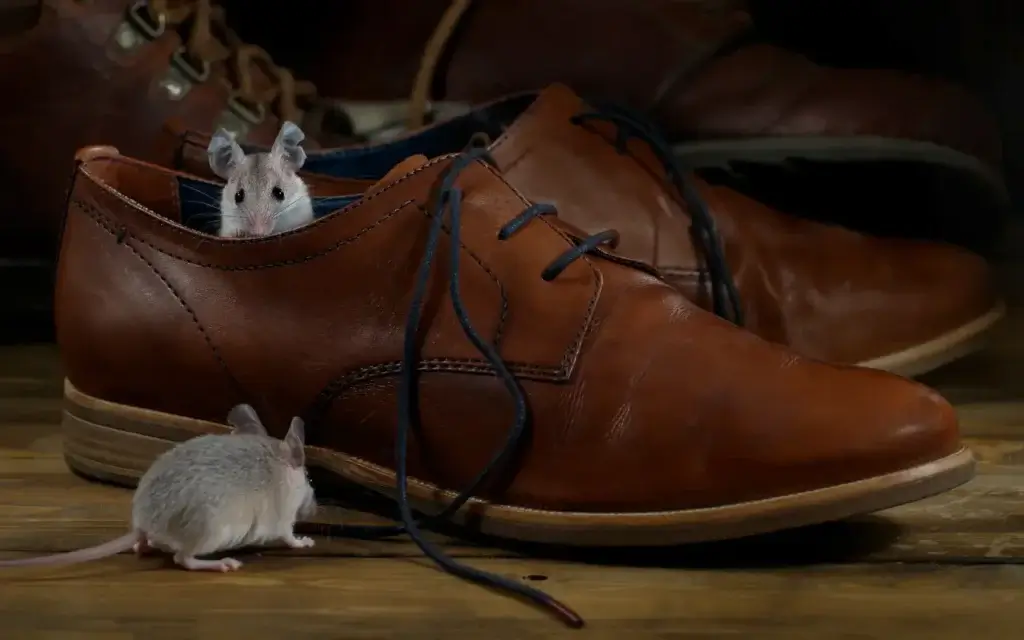
How Do Mice Get Into Your House in North Carolina?
If you've caught a rodent scurrying across the floor and disappearing under something in your home, you probably have questions. Many of those questions are likely related to how it got there and how you can get rid of it. But, how do mice get into your house? And what can you do about it?


Table of Contents
How Do Mice Get Into Your House?
Rodents are intelligent and curious creatures. They have a keen sense of direction and hearing. They're also extremely flexible. The spots that rodents choose to break in through are usually in areas near your home that they prefer to explore. Here are a few examples:
- Spots around your home that are hard to get into will be the perfect places for rodents to explore such as under your deck, patio, or porch.
- Dense landscaping near your foundation wall provides great cover.
- Underneath or behind the stairs is nice and secluded.
- Roof-soffit intersections give protection from flying predators.
Essentially, if you have a small crack or opening in your crawlspace, attic, plumbing, or walls, there's a chance you might get a visit from a mouse or rat one day. They are incredibly sly critters that are determined to enjoy the comforts of your home.
Still wondering, how do mice get into your house? Let's review the basics of rodent control.
Rodent Control 101
Rodent control refers to the management and prevention of infestations of rodents, which include mice and rats, in residential, commercial, and agricultural settings. These pests can pose significant health and structural risks, making effective control measures essential. Rodent control typically involves several key components:
- Identification and Assessment: The first step in rodent control is identifying the type and extent of the rodent infestation. Pest control professionals assess the infestation's size, location, and potential entry points to develop a tailored control plan.
- Exclusion: Preventing rodents from entering structures is crucial. This involves sealing gaps, cracks, and openings through which rodents can gain access. Properly fitted doors and windows, as well as secure screens and vents, are essential for exclusion.
- Sanitation: Maintaining a clean environment is essential to eliminate food sources and hiding places for rodents. Proper food storage, regular cleaning, and reducing clutter play key roles in sanitation efforts.
- Trapping and Baiting: Traps and bait stations may be used to capture and eliminate rodents already inside a structure. Different types of traps and baits are employed based on the specific rodent species and infestation size.
- Monitoring and Prevention: Regular monitoring helps assess the effectiveness of control measures and identifies new infestations early. Ongoing prevention strategies, such as routine inspections and maintenance, are crucial to keeping rodents at bay.
- Professional Pest Control: In severe infestations or when prevention efforts fall short, it's often necessary to seek professional pest control services. Pest management professionals have the expertise and tools to address rodent infestations comprehensively and safely.
Rodent control is essential not only for protecting property and preventing structural damage but also for safeguarding human health. Rodents can transmit diseases, contaminate food, and damage infrastructure, making effective control measures vital in various settings.
How Do Mice Get Into Your House: Common Entry Points
As rodents explore the ideal locations around and on top of your home, they will find ways in. To effectively deal with a mouse infestation, it's crucial to understand: how do mice get into your house in the first place. Let's review the common entry points rodents use to infiltrate homes and offer practical prevention strategies.
Mice will typically get into your home from a low location. Norway rats prefer low locations as well. Roof rats, as their name implies, are more likely to get in through high locations. Here are some ways rodents get in. Keep in mind that high locations are entry points used by roof rats.
- Cracks in your foundation.
- Gaps around the outside of your window frames, particularly windows in your foundation wall.
- Broken screens on windows or doors. Once inside, if it is secluded enough or the rodent has the cover of darkness long enough, it will chew through the window frame to gain access to the voids within.
- Gaps around doors, particularly below-ground-level doors. If damaged weather stripping or door sweeps provide a gap the size of a dime, most mice can squeeze right in. If they provide a gap the size of a quarter, most rats can squeeze in. If a gap isn't quite big enough, rodents are more than capable of making those gaps bigger.
- Flimsy aluminum soffits can easily be chewed through. These give access to the roof trough and the voids beyond.
- Gaskets around exhaust pipes. Rubber isn't much of a barrier for a determined rat.
- Vent covers that are made from plastic.
Some of these entry points can be protected by doing routine inspections and sealing any holes, gaps, or cracks as they develop. Some can be protected by adding stronger building materials. So, when exploring how do mice get into your house, start by sealing their entry and exit points.

Preventing Mice from Entering Your Home
If you consider and apply measures to make your home less of a target for rodents, you may be able to keep them from getting into your home. Rodents don't know how wonderful it is inside your home until they get in. But, when rodent pressures are high, more control will be necessary. When this is the case, an ongoing rodent control service in North Carolina is the best way to go.
By implementing preventive measures, you can significantly reduce the risk of mice entering your home and maintain a pest-free living space. So, let's move on from the question, "How do mice get into your house," to asking, "How can we prevent mice from entering my home?"
1. Seal Entry Points
One of the most crucial steps in mouse prevention is to identify and seal potential entry points. Mice can squeeze through tiny openings, so it's essential to inspect your home thoroughly. Look for gaps and cracks around doors, windows, vents, and utility penetrations. Use weatherstripping, caulk, or steel wool to seal these openings. Pay special attention to the foundation, as mice can enter through even the smallest gaps. Installing screens or covers over foundation vents and chimney caps can further deter mouse entry. Regularly inspect the roofline for damaged or loose roof eaves, and promptly repair any issues to prevent mice from gaining access to your home.
2. Maintain a Clean Environment
Mice are attracted to food sources, so maintaining a clean and clutter-free environment is essential. Store food in airtight containers to prevent mice from smelling and accessing it. Keep kitchen and pantry areas tidy and free of crumbs. Regularly clean up spills and crumbs, especially in hard-to-reach places like under appliances. Store pet food in sealed containers, and avoid leaving it out overnight. In addition to food sources, mice also seek shelter and nesting materials. Reduce clutter in your home, basement, and attic to eliminate potential hiding spots.
3. Landscaping and Exterior Maintenance
The exterior of your home can provide various entry points for mice. Trim trees and shrubs away from your home, as mice can use overhanging branches to access your roof. Keep firewood, gardening equipment, and pet food stored in sealed containers and positioned away from the exterior of your home.
Regularly inspect your home's foundation, walls, and roof for signs of damage or gaps that mice could exploit. Properly fitted doors and windows are essential; ensure they close tightly to prevent mouse entry. If you have utility lines or pipes entering your home, seal any gaps around them with caulk or foam to block potential entry points for mice.
Final Word: How Do Mice Get Into Your House?
Rodents are a serious health threat for a family and they are destructive guests when they get into a home. If you suspect that your efforts to keep them out are falling short, consider investing in a residential pest control plan that has a rodent control program included. No home should be without a pest control plan, especially one that tracks and removes rodents before they get in. Contact us today for more information.
